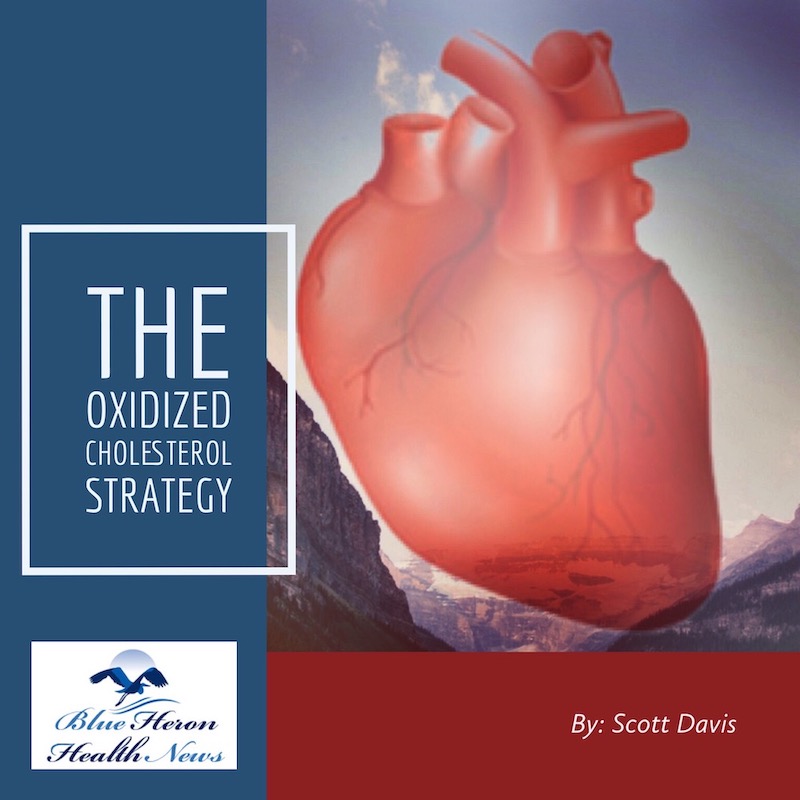
The Oxidized Cholesterol Strategy™ By Scott Davis The Oxidized Cholesterol Strategy is a well-researched program that reveals little known secret on how to tackle cholesterol plaque. This program will tell you step by step instructions on what you need to completely clean plaque buildup in your arteries so as to drop your cholesterol to healthy level.
How does chronic pain influence cholesterol oxidation?
Chronic pain can influence cholesterol oxidation through several pathways, primarily by promoting inflammation and oxidative stress. Here’s how chronic pain may impact cholesterol oxidation and contribute to metabolic and cardiovascular issues:
1. Inflammation and Oxidative Stress
- Pro-inflammatory Cytokines: Chronic pain, particularly pain associated with conditions like arthritis, fibromyalgia, or neuropathy, often involves prolonged inflammation. This inflammation is driven by the release of pro-inflammatory cytokines (such as TNF-alpha, IL-6), which can contribute to oxidative stress. Oxidative stress occurs when the body’s ability to neutralize free radicals is overwhelmed, leading to damage in cells, tissues, and lipids, including cholesterol.
- Increased Reactive Oxygen Species (ROS): Inflammation associated with chronic pain triggers the production of ROS, which are unstable molecules that can damage cellular components, including cholesterol. This oxidation process leads to the formation of oxidized LDL (low-density lipoprotein), a form of cholesterol that is more likely to promote atherosclerosis (plaque buildup in arteries) and increase the risk of cardiovascular diseases.
2. Chronic Stress Response
- Activation of the Sympathetic Nervous System: Chronic pain is often associated with long-term stress, which activates the sympathetic nervous system (the fight-or-flight response). This leads to the release of stress hormones like cortisol and adrenaline. Chronic elevation of cortisol can result in increased oxidative stress and inflammation, promoting cholesterol oxidation and further contributing to vascular and metabolic issues.
- Elevated Blood Pressure: Chronic pain often leads to elevated blood pressure due to stress responses, which can damage the endothelial lining of blood vessels. This endothelial damage increases the risk of LDL oxidation, leading to the formation of plaques and the development of atherosclerosis.
3. Lifestyle Factors Linked to Chronic Pain
- Physical Inactivity: Individuals experiencing chronic pain may reduce their physical activity due to discomfort, which can exacerbate metabolic issues such as elevated cholesterol levels and poor lipid metabolism. Reduced physical activity contributes to oxidative stress and the oxidation of cholesterol, increasing the risk of cardiovascular disease.
- Dietary Changes: Chronic pain may influence eating habits, leading to the consumption of comfort foods that are often high in unhealthy fats, sugars, and processed foods. These dietary choices can increase inflammation and oxidative stress, further promoting the oxidation of cholesterol. Additionally, stress-induced eating behaviors may reduce the intake of antioxidant-rich foods that could mitigate oxidative damage.
- Sleep Disruptions: Chronic pain often leads to sleep disturbances, which can elevate oxidative stress and inflammation. Poor sleep quality has been associated with increased levels of oxidized LDL cholesterol and heightened cardiovascular risk.
4. Effect on Metabolic Pathways
- Impaired Lipid Metabolism: Chronic pain and associated inflammation can interfere with normal lipid metabolism. Inflammation can alter the function of liver enzymes that process fats, leading to an imbalance in lipid profiles. This imbalance may increase the production of oxidized LDL, which can further contribute to the development of cardiovascular conditions.
- Insulin Resistance: Chronic pain conditions, particularly those involving inflammation, can also contribute to insulin resistance. Insulin resistance is a key factor in the development of metabolic syndrome and type 2 diabetes, and it is often associated with higher levels of oxidized cholesterol. Elevated oxidized cholesterol levels can exacerbate insulin resistance, creating a vicious cycle.
5. Neuroinflammation
- Central Nervous System Inflammation: In certain chronic pain conditions, particularly those involving the central nervous system (e.g., neuropathic pain), neuroinflammation plays a significant role. This type of inflammation can influence peripheral inflammation and increase oxidative stress throughout the body, including in blood vessels and cholesterol. This can contribute to the oxidation of LDL cholesterol and the development of cardiovascular disease.
Potential Long-Term Consequences of Chronic Pain-Induced Cholesterol Oxidation
- Increased Risk of Atherosclerosis: Oxidized LDL is more likely to be taken up by macrophages in the arterial walls, leading to the formation of plaques and thickening of the arteries (atherosclerosis). This can restrict blood flow, increase the risk of heart attacks, strokes, and other cardiovascular events.
- Higher Cardiovascular Risk: The combination of chronic inflammation, oxidative stress, and elevated oxidized cholesterol can significantly increase the risk of cardiovascular disease. This is especially concerning in individuals with pre-existing conditions like hypertension or diabetes, which are often aggravated by chronic pain.
- Worsening Metabolic Dysfunction: Chronic pain and the associated inflammation can worsen lipid profiles, increase insulin resistance, and promote metabolic dysfunction. This increases the risk of developing type 2 diabetes, metabolic syndrome, and other related conditions.
Managing Cholesterol Oxidation in Chronic Pain
To mitigate the effects of chronic pain on cholesterol oxidation and overall health, consider the following approaches:
- Anti-inflammatory Diet: A diet rich in anti-inflammatory foods (e.g., fruits, vegetables, whole grains, fatty fish, and nuts) can help reduce inflammation and oxidative stress. Omega-3 fatty acids, in particular, are known to reduce inflammation and improve lipid profiles.
- Antioxidants: Incorporating foods high in antioxidants (e.g., berries, green tea, dark chocolate, and leafy greens) can help combat oxidative stress and protect against cholesterol oxidation.
- Regular Physical Activity: Even moderate exercise can help reduce inflammation, improve circulation, and promote healthy cholesterol levels. Exercise also helps reduce pain and stress, improving overall health.
- Stress Management: Techniques such as mindfulness meditation, deep breathing, yoga, and other relaxation methods can help reduce the impact of chronic pain-related stress on oxidative stress and inflammation.
- Adequate Sleep: Ensuring good quality sleep can help regulate inflammatory responses and reduce oxidative damage.
By addressing both the physical and emotional aspects of chronic pain, individuals may reduce the impact of cholesterol oxidation and its associated risks for cardiovascular and metabolic health.
The Oxidized Cholesterol Strategy™ By Scott Davis The Oxidized Cholesterol Strategy is a well-researched program that reveals little known secret on how to tackle cholesterol plaque. This program will tell you step by step instructions on what you need to completely clean plaque buildup in your arteries so as to drop your cholesterol to healthy level.
